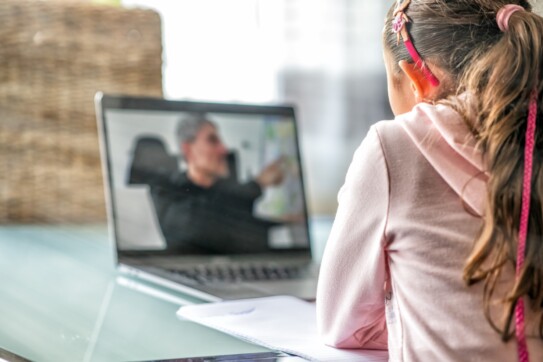How are Schools Tracking Attendance During Distance Learning?

Our hats are off to all K–12 schools for keeping our communities safe during this challenging time while continuing to educate our children. The sheer speed at which schools have mobilized to enact remote learning is inspiring. Now that many schools have gotten over the technological hurdle of supporting virtual classrooms, let’s review the strategies under consideration for attendance tracking policies.
A key differentiator for how schools are tracking remote attendance is whether synchronous or asynchronous learning is taking place. With synchronous learning, where students attend scheduled virtual classes, the consensus is that teachers are continuing to track attendance as they normally would.
“We have edited our daily schedule,” said Mary Kanakaris, school registrar at Cape Henry Collegiate. “Our middle school and upper school will have three classes a day for 45 minutes. Our faculty will be able to take attendance as usual as the students log in with Zoom.”
It’s asynchronous or blended approaches where attendance tracking gets interesting, and schools are devising creative solutions that are dictated in part by the grade level and day or boarding offerings.
One creative approach is to track students’ logins into Blackbaud’s education management system. “We have asked students to log on to the school website each day on or before 9:00 a.m. to get that day’s assignments,” said Jim Manikas, director of technology at Webb School of Knoxville. “At the end of the day, we have two reports that we can run—User Logins and First “n” logins.”
For Webb, these reports are a starting point while Manikas investigates other options. While the reports weren’t created for attendance, Manikas notes that they will serve the purpose of identifying “what students have logged in to the system and at what time each day.”
Thayer Academy’s IT department is considering a couple of different creative strategies. “We thought discussions would be a good fit for attendance because it would be verified and student-initiated,” said Database Administrator Rose Pfeffer, referring to the Graded Discussions functionality in Blackbaud Learning Management System.
“We count attendance based on every period in our upper school,” Pfeffer said, “and while we have written a distance learning plan where teachers will be using Zoom, it won’t be for all meeting periods. Discussions are part of a program the students and faculty already know and are in real-time.
“We’re also discussing the idea of using assignments. Teachers can create ‘Attendance’ assignments in bulk and adjust the dates appropriately. Instead of submitting a file, students would just enter ‘here’ into the online submission text box. This will give us a timestamp as well, which we like.”
Being a boarding and day school with students now living in multiple time zones has led St. Stephen’s Episcopal School to halt remote learning attendance tracking altogether. “We are not attempting synchronous class meetings, and so we are not tracking attendance,” said IT Systems Administrator Brian Gray. “Instead, teachers will give assignments for students to work on when they can. The student accountability is based on the work done—not that a student was online at a particular time.”
A similar approach is taking place at Metairie Park Country Day School (MPCDS), a Pre-K–12 day school conducting a blend of synchronous and asynchronous learning. “We’ve changed our policy where we’re not taking attendance every day because students are supposed to be in their homes so we don’t really have to be mindful of whether or not they’re in a safe place,” said Director of Technology Linda Lawrence.
Having a flexible approach to attendance where teachers report if students aren’t engaging is part of MPCDS’s big-picture philosophy to distance learning during the coronavirus crisis. “What we’re trying to do is balance the seriousness of the situation with establishing a routine. In other words, we’re trying to balance the needs of our families and the stress this is causing while wanting to keep school going.”
MPCDS is maintaining this balance by reworking the school’s schedule and publishing expectations for students, teachers, and parents in its Continued Learning Plan, while also showing compassion for students overall wellbeing by encouraging them to unplug from schoolwork and stay offline after 5 p.m.
“What’s great is that students are taking ownership for what they’re doing,” Lawrence said, seeing the potential for this new approach to have a lasting effect. “One of the things that might come out of this is the realization that we’re turning more into a mastery model with an emphasis on mastering content rather than sitting through a number of minutes in a classroom. I think that once the dust settles, there’s going to be bigger discussions about that part of it.”
See how Blackbaud’s attendance software for K–12 private schools functions here.